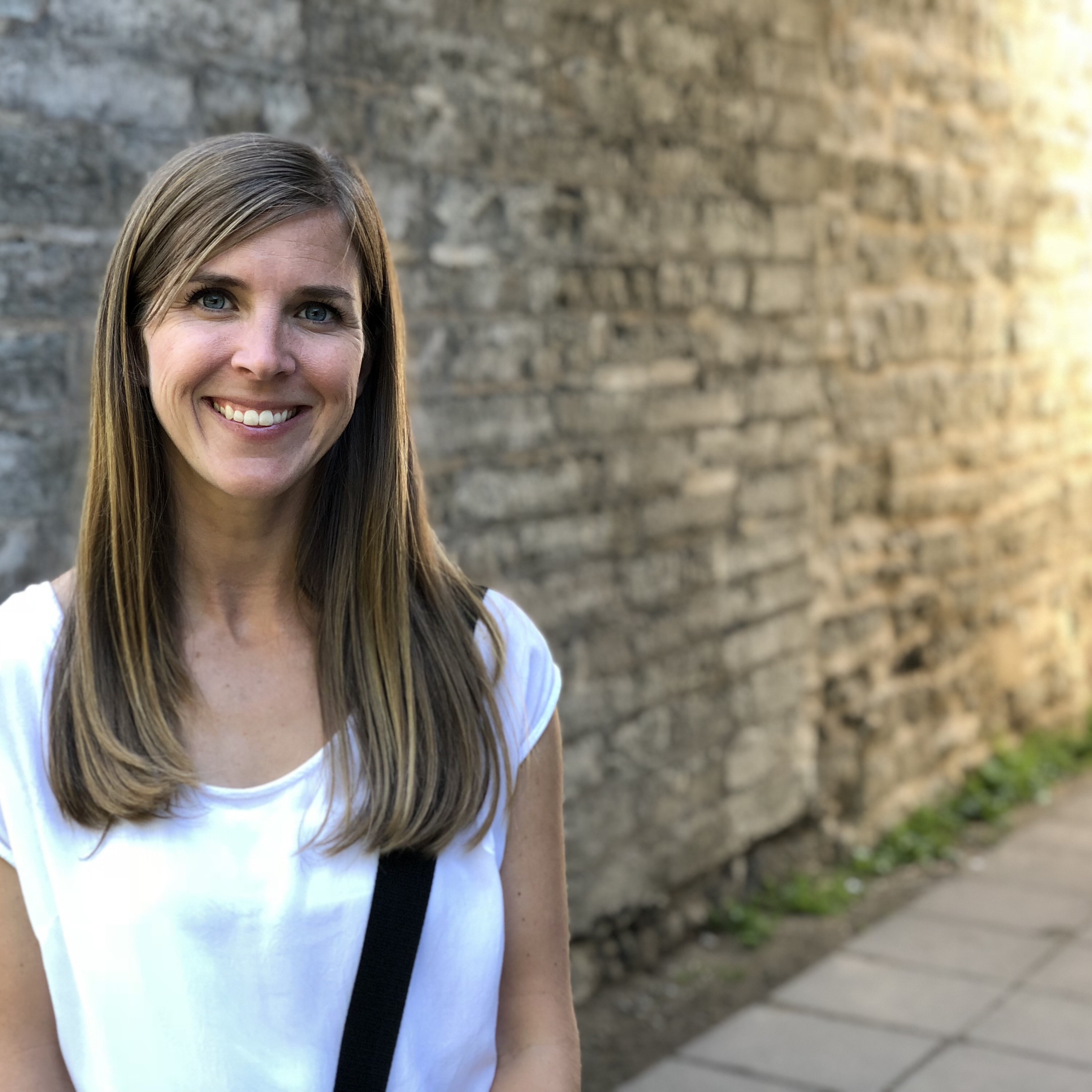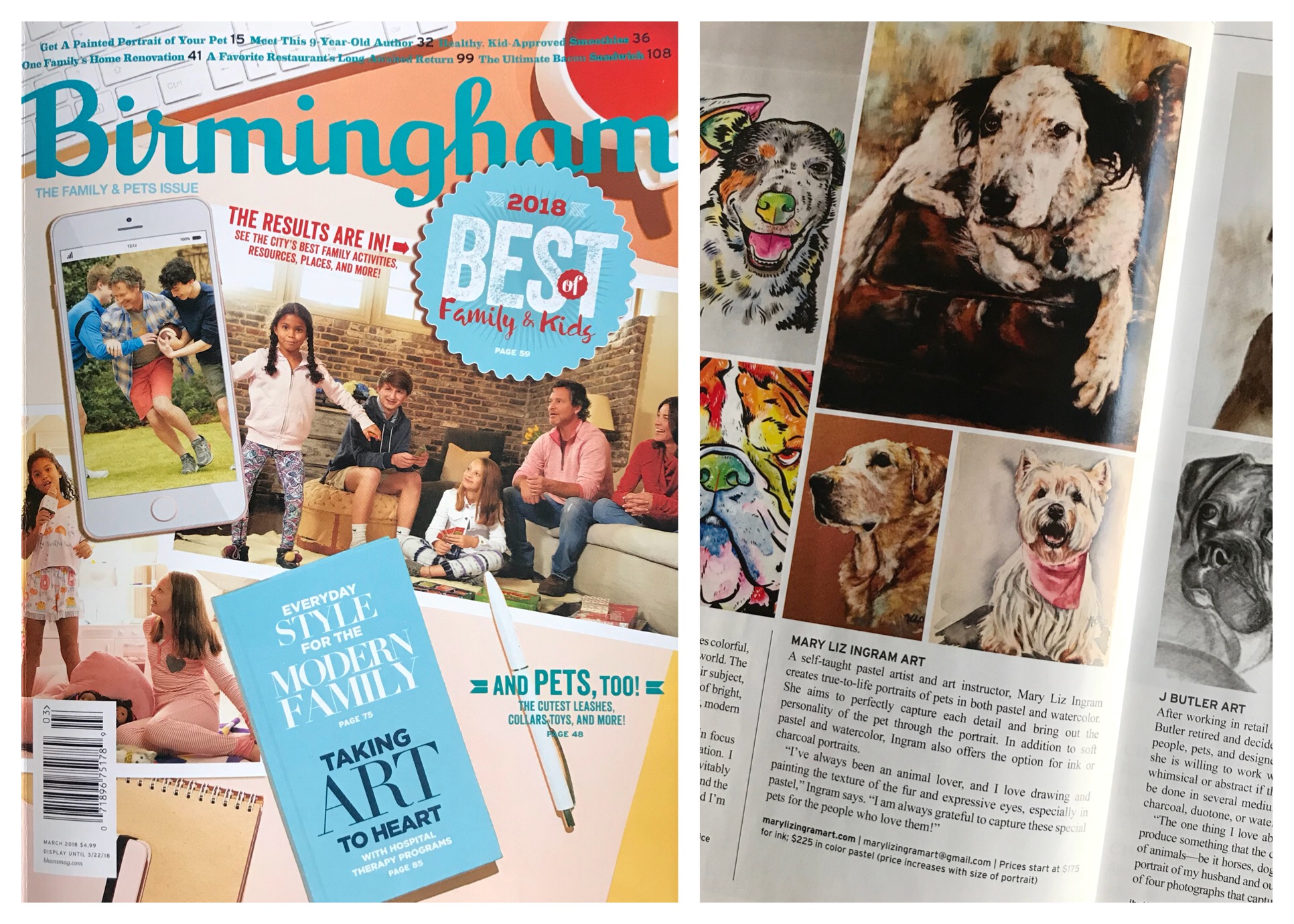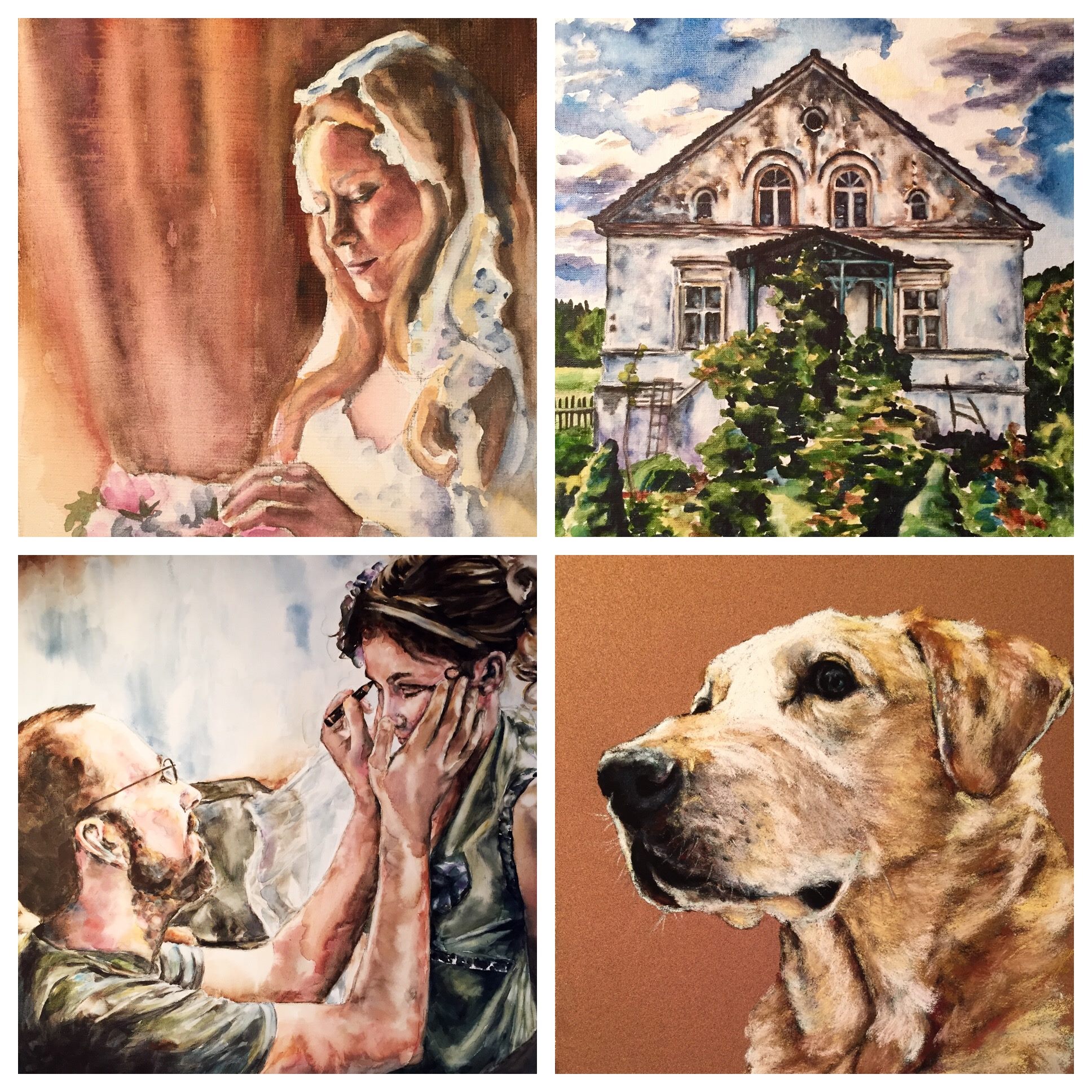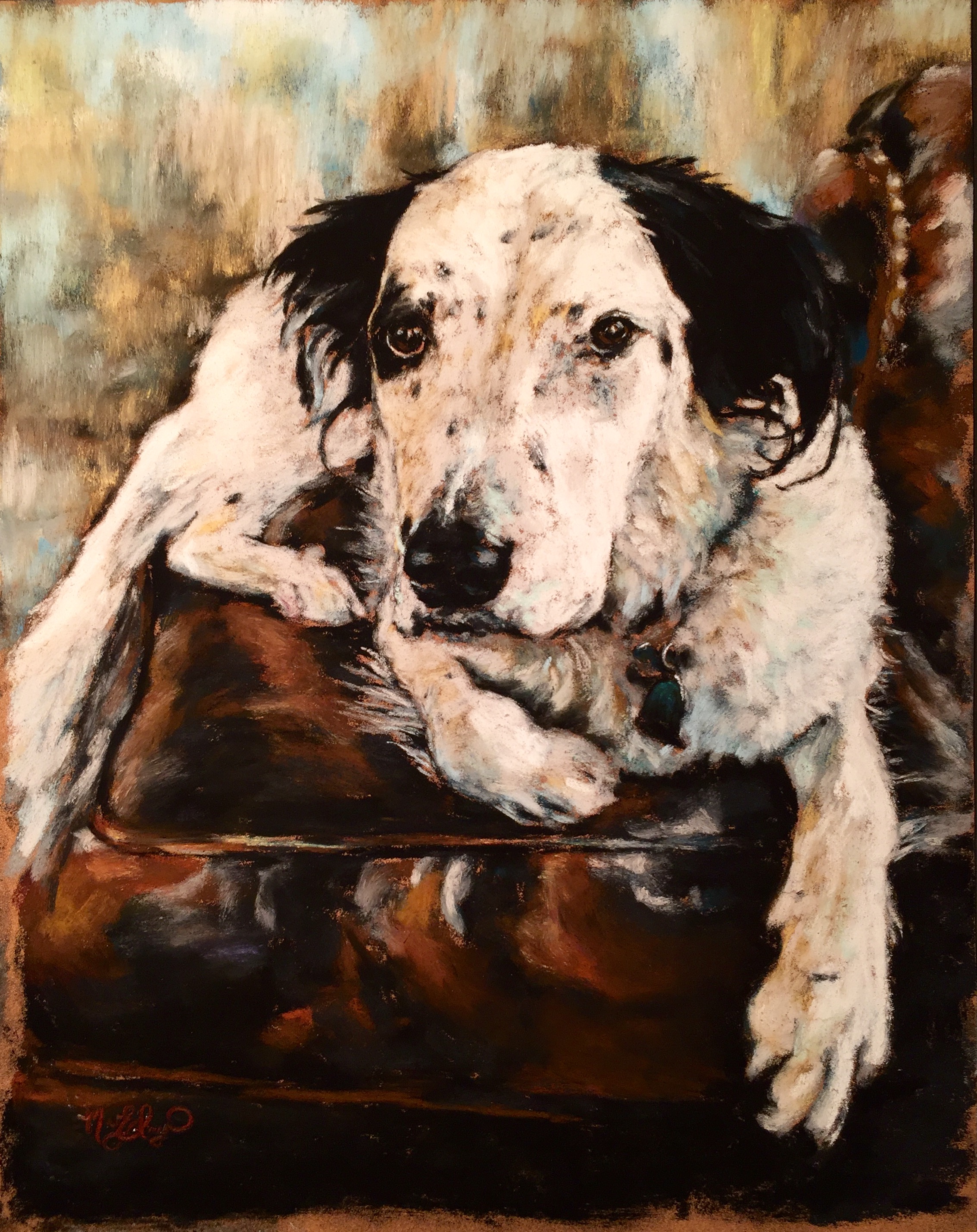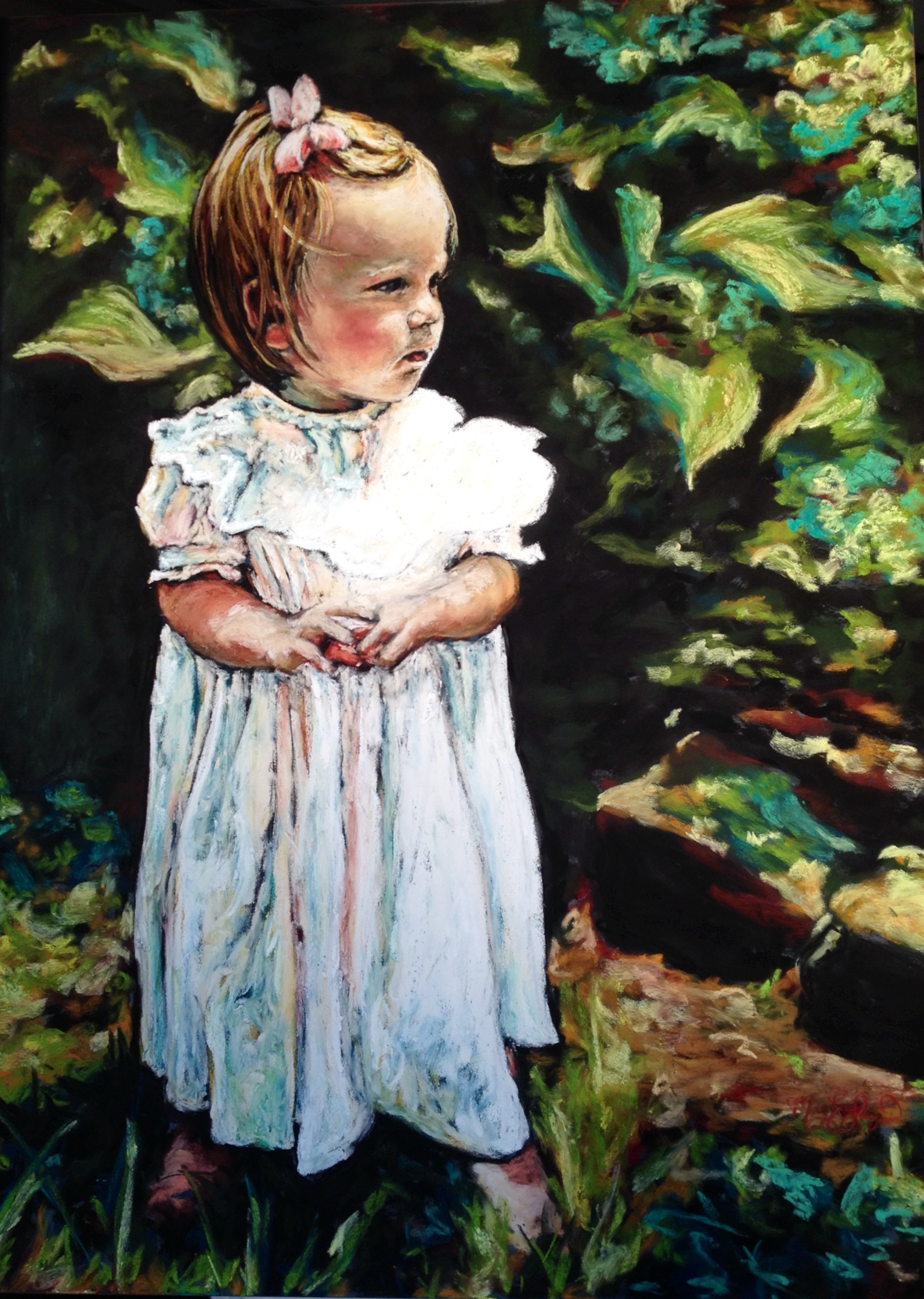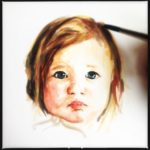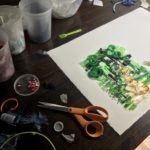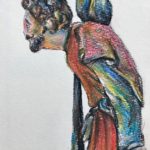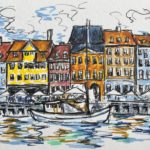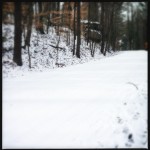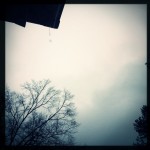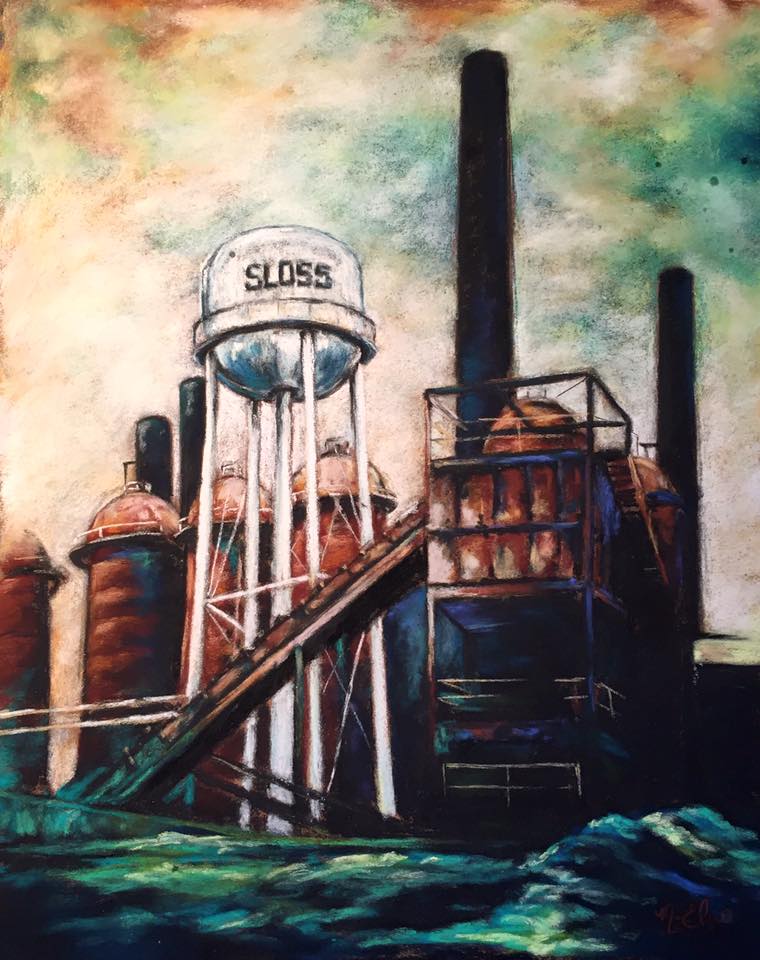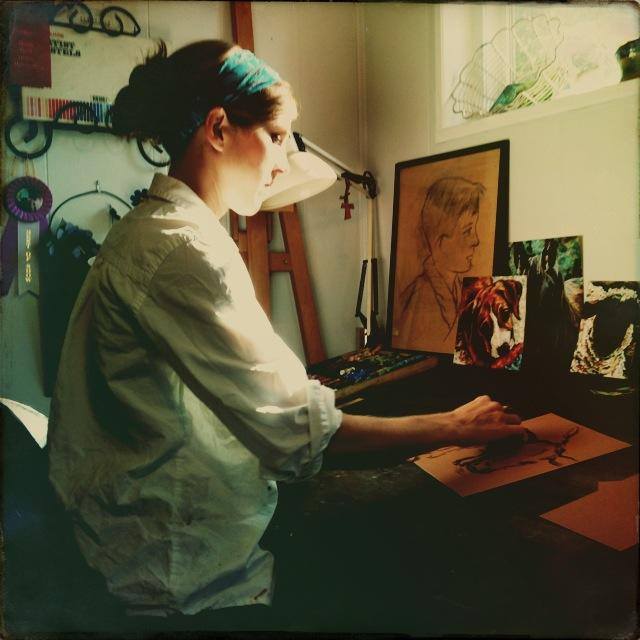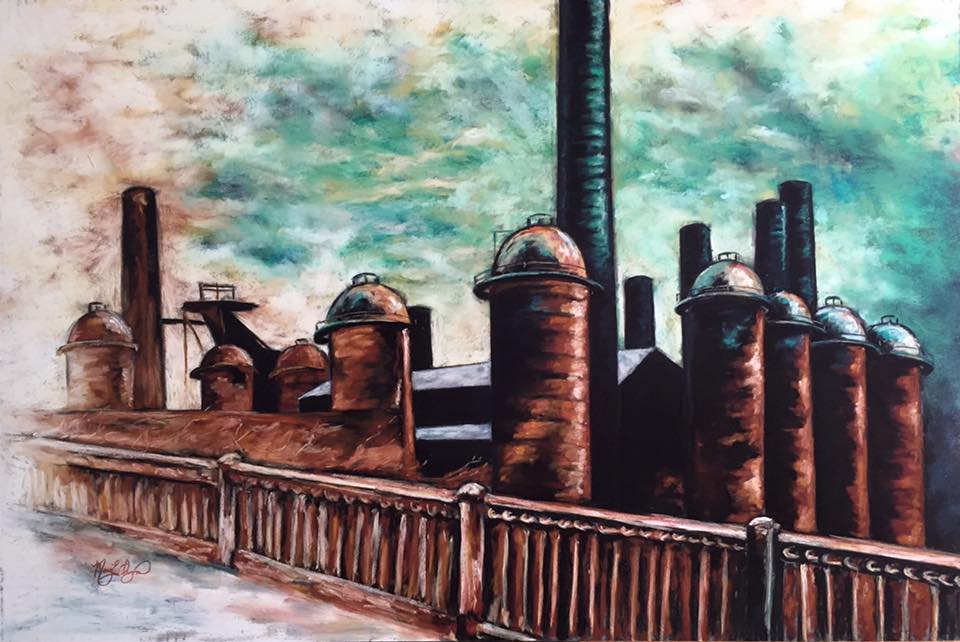After a few weeks, the Spanish Steps are finally complete!

Since the piece is so large and bulky (30×30″), I moved my workspace from my art desk to my kitchen table, propping it up on a makeshift platform of a pastel box and French box easel. I used the grid method to make sure I got this technical subject correct, checking angles and being careful to keep my lines straight. I use a grid, dividing the space into quarters first and then lightly into 16 spaces, only occasionally when enlarging to such a great extent. I sketch first with pencil, making only a few corrections by pressing with a kneaded eraser (never rubbing as it damages texture); I just draw over “mistakes” rather than spend time erasing, since the pastel will cover any marks-gone-awry. Over the correct pencil marks, I redraw with a charcoal pencil to give it more substance and to ensure no parts get “lost” in the vibrant pastel.
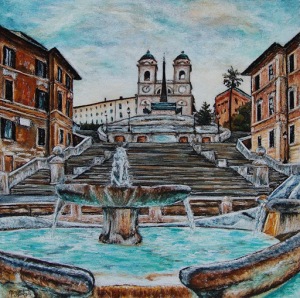
After the Spanish Steps were drawn and my area prepared, I began layering the pastel. Working on my self-prepared Pastel Ground surface proved different than I first expected. To the touch, the texture felt fine and grainy like a Pastelbord, but when I began applying the pastel for my sky, I found it more bumpy than sandy. At first I was frustrated working with such a rough texture that showed every pastel stroke. As I moved on to the rust-colored buildings, I embraced the difference of surface and adjusted my application to a more Impressionist-like, unfinished stroke, and with perseverance, am finally satisfied with the result.
I like the roughness I see when I look closely at the fountain, and it reminds me of some of Degas’ gritty looking pastel drawings. In the future, I will choose my surface based on the result I seek, adding Pastel Ground into the mix when I am looking for a deeper texture. This project was a learning experience and I am pleased to have been able to “experiment” a bit more than usual.











